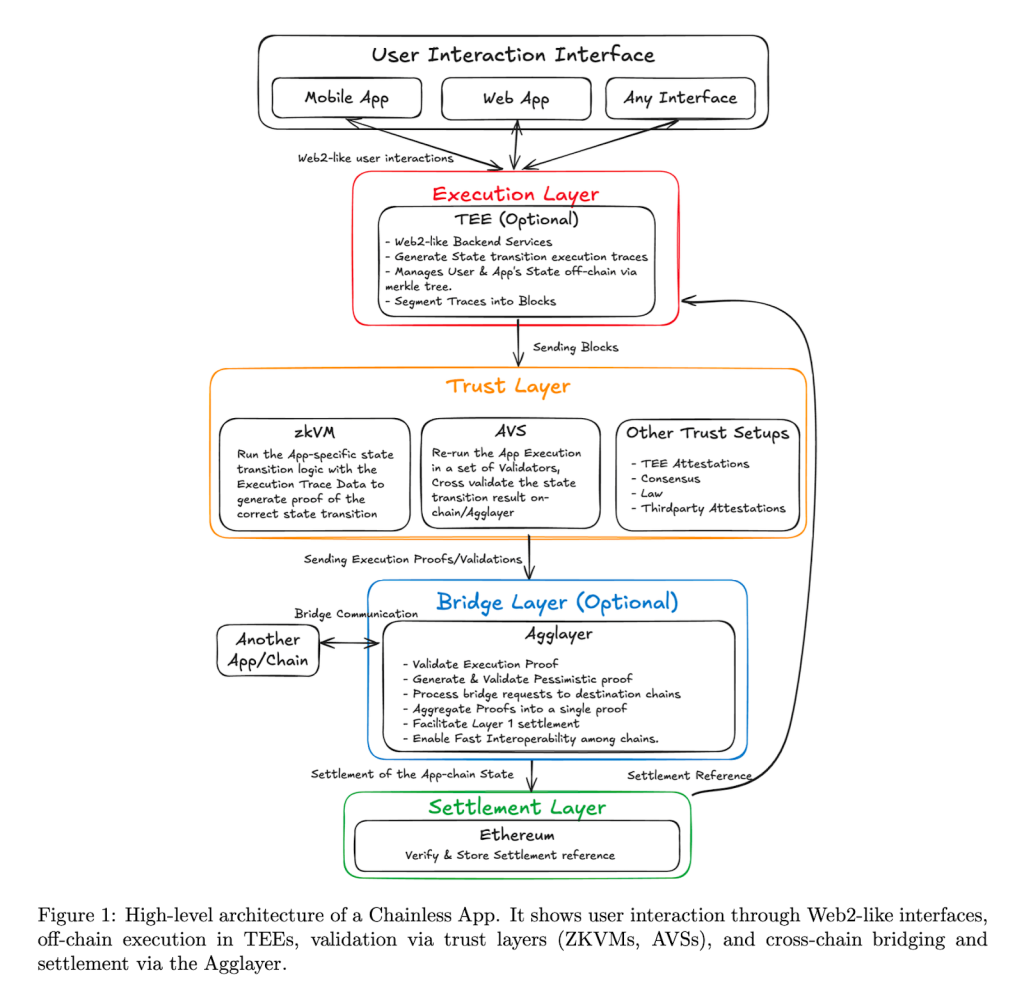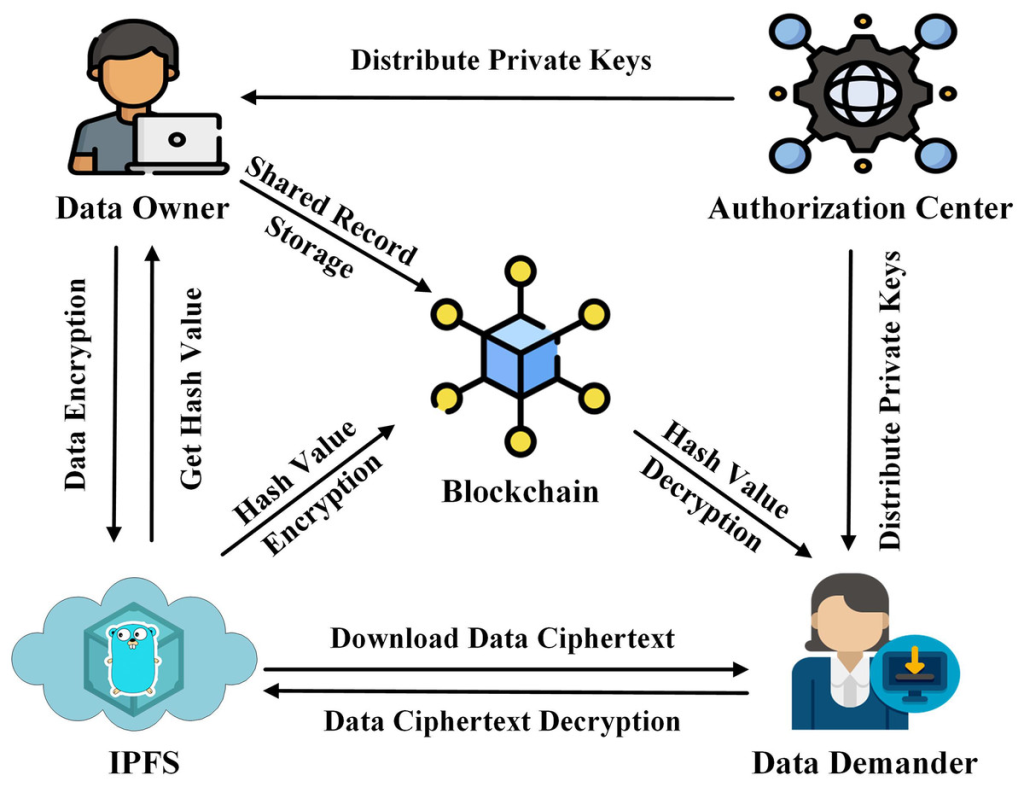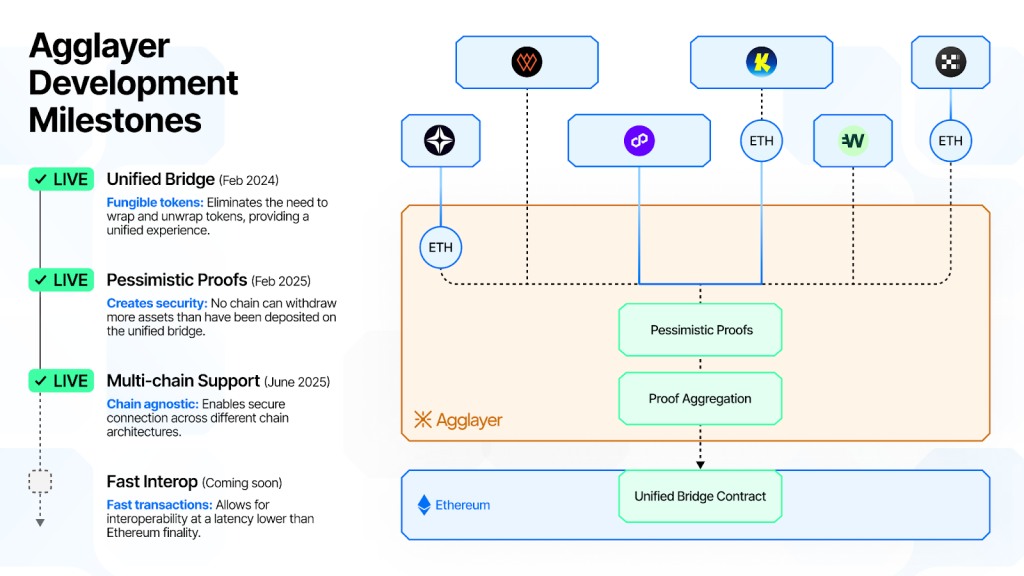In the rapidly evolving world of blockchain, Chainless apps Web3 architecture is emerging as a game-changer. It promises to eliminate the traditional trade-off between user experience and security in decentralized applications. Many blockchain apps today face a dilemma: they either offer a seamless, Web2-like UX or uncompromising Web3 trust, but rarely both. Users often endure friction from managing wallets, paying gas fees, and navigating complex bridges – all of which hinders broader adoption.
Chainless Apps aim to change this by delivering the speed and familiarity of Web2 apps alongside the verifiability and trustlessness of Web3. This powerful approach empowers Web3 developers to build dApps that feel as smooth as traditional web apps while preserving blockchain-grade security.
What Are Chainless Apps?
Chainless Apps are a new paradigm for Web3 development that combines Web2-like performance with Web3-grade security. In essence, a chainless app is a decentralized application built on a modular framework, where different aspects of the app run in distinct layers rather than all on one blockchain.
According to a recent Polygon Labs overview, Chainless Apps are “designed to deliver Web2-like performance and user experience while preserving Web3-grade trustlessness and verifiability”. They achieve this by separating core functions into composable layers – typically Execution, Trust, Bridging (Interoperability), and Settlement. This layered approach allows developers to optimize each part of their app for speed, security, or scalability as needed.

Modular architecture of a Chainless App, showing Execution (off-chain), Trust Layer (verification), Bridging (Agglayer), and Settlement (on-chain). This highlights how chainless apps balance performance and blockchain trust (Source: Polygon Labs)
In a chainless architecture, most of the application’s logic executes off-chain (off the main blockchain). This means the app can process many operations quickly without waiting for blockchain confirmation at every step. But unlike a purely centralized system, every off-chain action is later verified and anchored on-chain to ensure integrity. In other words, the app runs like Web2 on the front-end, but the back-end checks are all about blockchain trust. By modularizing the design, Web3 developers can plug in different tools and services at each layer (for example, using various developer tools for zero-knowledge proofs or decentralized validators) to meet their app’s requirements for security and performance.
How Chainless Apps Work: A Modular Approach
The Chainless Apps framework breaks down a dApp’s architecture into four key layers, each responsible for a crucial aspect of the application’s operation. This modular approach is what enables the blend of high performance, robust security, and easy blockchain integration. Below are the primary layers and their roles:
- Execution Layer: Handles the app’s core business logic and user interactions off-chain. It runs the transactions in real-time, maintaining the application state without immediate blockchain involvement. By using app-specific execution engines or even secure environments, this layer achieves high throughput (potentially thousands of operations per second). The Execution Layer produces a verifiable log or trace of transactions, which can later be audited. The freedom to execute off-chain means the user experiences near-instant responses, akin to a Web2 app, with no visible lag from block times or gas fees.

In-depth modular breakdown of a Chainless App, showcasing Agglayer integration across layers such as Execution, Trust, Bridging, and Settlement. This diagram presents detail-rich annotation for developers focused on architectural clarity (Source: Chainless Apps)
- Trust Layer: This layer is all about verification. It takes the execution trace from the previous layer and validates it to ensure trustlessness. Various verification mechanisms can be used depending on the app’s needs:
- Zero-Knowledge Proofs (zkVMs) – a cryptographic approach where a proof of correctness is generated for the off-chain computations. This provides strong security (similar to advanced rollups) and the proof can be quickly checked on-chain.
- Decentralized Validators (Committee-Based) – a network of validators or a committee re-executes or agrees on the results, using staking and consensus to guarantee correctness.
- Trusted Execution/Operator – in some cases, a trusted server or enclave might attest to the result for speed, which is useful for low-risk or internal apps.
- Developers can mix and match trust models (even hybrid approaches) to balance security and performance for their specific use case. The Trust Layer ensures that even though the app ran off-chain, its results are provably correct and honest, preserving the blockchain trust users expect.
- Interoperability (Bridging) Layer: Modern Web3 apps often need to work across multiple blockchains or enable users to move assets between networks. The interoperability layer (exemplified by solutions like Agglayer) abstracts away the complexity of these multi-chain operations. It provides unified messaging and asset bridging, so the app can interact with any blockchain seamlessly.
Chain-agnostic routing means users don’t have to manually bridge tokens or worry about different networks – the app handles it behind the scenes. Developer toolkits like AggKit simplify integration with such cross-chain infrastructure. This layer essentially unifies liquidity and state across chains, making the whole system feel like one coherent platform to the user. For the user, that means no more switching networks or paying multiple gas fees; the app feels as straightforward as a single-network service even if it’s leveraging many blockchains in the background.
- Settlement Layer: This is where everything comes together on the blockchain. After execution and verification, the final confirmed state or proof is anchored onto a secure base blockchain (often a major one like Ethereum). This provides finality and security – it’s the source of truth everyone can agree on. By settling on a proven blockchain, Chainless Apps gain the long-term security and dispute resolution capabilities of that network. Essentially, even though the app ran mostly off-chain, its outcomes are locked in on-chain, ensuring transparency and trust. This layer also handles any on-chain token transfers or updates that result from the app’s activities (for example, updating balances after a batch of off-chain trades).
Each of these layers can be thought of as a modular component. A developer might use existing developer tools or services for each layer (for instance, a zk-Prover service for the Trust Layer, or Agglayer’s APIs for the bridging layer). Because they are separate, each layer can scale independently, and improvements in one layer don’t necessarily require changes to the others. This architecture is what allows Chainless Apps to be both highly scalable and secure – you optimize for both, in parallel, rather than sacrificing one for the other.
Benefits of Chainless Apps for Developers and Users
Adopting the chainless architecture yields significant benefits for both developers building the applications and the end-users interacting with them:

Layered diagram illustrating how Chainless Apps align with developer and user benefits: fast off-chain execution for Web2-like user experience, cryptographic trust via verification, and seamless cross-chain interoperability. This visual succinctly captures the synergy of performance, scalability, and trust (Source: PeerJ)
- Web2-Like User Experience: Chainless Apps provide an interface and speed comparable to traditional web apps. Users get near-instant interactions without the usual Web3 hassles. For example, they don’t need to constantly approve transactions or wait for block confirmations. By running logic off-chain and confirming later, the UI stays smooth and responsive. This kind of Web2 UX is crucial for mass adoption, as users barely notice they’re using a blockchain-based service.
- Blockchain-Grade Trust and Security: Despite the Web2-level convenience, Chainless Apps do not compromise on the trustlessness that defines Web3. Every important action is verified through cryptography or decentralized consensus. Final states and proofs are recorded on a public blockchain for transparency and security. This means users and investors can trust the results just as they would in a fully on-chain app. The modular trust layer ensures errors or fraudulent activity in off-chain execution are caught before finalization. In short, you get blockchain integrity without the wait.
- Improved Scalability and Performance: Because most operations occur off-chain in a controlled environment, Chainless Apps can handle far greater throughput than typical on-chain dApps. By avoiding global re-execution for every transaction, they bypass the performance bottleneck of blockchains. This scalability means applications can grow to support many more users and complex operations without grinding to a halt.
Whether it’s a DeFi trading platform needing high-frequency transactions or a game with real-time interactions, chainless design can accommodate it. Off-chain execution combined with succinct proofs or batched verification significantly lowers the computational load on the base blockchain.
- Seamless Blockchain Integration (Interoperability): Blockchain integration becomes easier as the interoperability layer abstracts away the multi-chain complexity. Developers can integrate assets and services from various blockchains into one app without forcing the user to juggle different wallets or networks. The app can automatically route transactions to the appropriate chain and handle cross-chain messaging. For users, this unified experience means the app’s features are available in one place, regardless of which blockchain they originate from. It also enhances liquidity and network effects, as assets from different chains can interact under the hood.

Agglayer interoperability architecture: unified bridge, pessimistic proofs, and proof aggregation enable seamless cross-chain transactions for chainless apps (Source: Polygon Labs)
- Flexibility for Developers: The modular nature of Chainless Apps gives developers freedom to customize their stack. Need ultra-high security? Opt for zk-proof verification. Need ultra-low latency for a game? Perhaps use a trusted enclave with periodic proofs. Because the architecture supports hybrid trust models, developers can tailor the security vs. performance trade-off per their application’s needs. Additionally, emerging developer tools like Agglayer’s AggKit make it easier to implement these layers without starting from scratch. This means faster development cycles and the ability to leverage existing frameworks and developer tools designed for modular dApps.
- Future-Proof and Upgradeable: As blockchain technology evolves (e.g., faster zk-proof systems or new interoperability protocols), a chainless app can upgrade individual layers without a complete rewrite of the entire application. This adaptability is crucial for CTOs planning long-term tech strategy. It ensures that adopting a chainless architecture today will continue to pay off as new innovations (like improved scalability solutions or cross-chain standards) can be slotted into the appropriate layer.
Real-World Use Cases and Impact
Chainless Apps unlock possibilities that were hard to achieve with traditional blockchain designs. By overcoming UX and performance limitations, they enable a new class of decentralized applications that can rival centralized services. Here are a few examples of what becomes possible:
- High-Frequency Trading Platforms: Imagine a decentralized exchange that operates as smoothly as a centralized one. With a chainless architecture, a trading app could execute thousands of trades per second off-chain (mimicking the speed of Web2 finance) and periodically settle net results on-chain. Traders get instant fills and updates, while still retaining the ability to verify trades on-chain for fairness. This could attract institutional investors to DeFi by providing both speed and trust.
- Web3 Gaming with Web2 UX: Blockchain games often struggle with lag and transaction costs. A chainless game can run all game logic off-chain (for real-time responsiveness) and use the trust layer to ensure no one cheated by submitting a wrong result. In-game assets and rewards could move across chains seamlessly via the interoperability layer. The end result is a game that feels like a normal online game to players but still gives them true ownership of assets and provable fairness of gameplay.

- Cross-Chain Financial Services: For enterprises and financial institutions, chainless apps can act as a unifying layer over multiple blockchains. For example, a private finance system might use a Chainless approach to aggregate liquidity across various networks without exposing users to the complexity of each network. Real World Assets (RWA) tokenization, lending platforms, or asset management tools could operate on several blockchains but present one coherent service to end-users. They gain the benefit of larger liquidity pools and interoperability, with the Chainless bridging ensuring assets are safe across chains (using techniques like pessimistic proofs to secure bridges).
- Trustless Data Integration (Oracles): Chainless Apps can even bring in off-chain data (from Web2 APIs) in a verifiable way. Using technologies like zkTLS (zero-knowledge proofs for HTTPS), an oracle service could fetch data from a Web2 API and prove to a smart contract that the data is authentic. This allows Web3 applications to trust external data without relying on a single centralized oracle. The chainless framework supports integrating such oracles as part of the app’s trust layer, broadening what dApps can do (e.g., integrate with Web2 services securely).
The impact of Chainless Apps is potentially transformative. By solving the user experience vs. decentralization conundrum, they make decentralized tech appealing to a much broader audience.
For CEOs and product leaders, this means blockchain-based offerings can finally compete with Web2 products on usability, unlocking new markets and opportunities. For developers and CTOs, it means being able to build ambitious dApps without being bottlenecked by current blockchain limits. The scalability and flexibility of chainless architecture paves the way for enterprise-scale Web3 applications that can serve millions of users globally.
Conclusion
The concept of Chainless Apps represents a significant step forward in blockchain innovation. By marrying the best of Web2 and Web3, it creates a path for decentralized applications to achieve internet-scale adoption. Tech leaders around the world – from startup CTOs to enterprise architects – are taking note of this approach as a means to deliver robust blockchain solutions without compromising on user experience or trust. As the underlying tooling and infrastructure (like developer kits and interoperability networks) mature, implementing a chainless architecture will become increasingly accessible and cost-effective.
Now is the time to explore Chainless Apps in your Web3 strategy. Businesses that leverage this model can gain a competitive edge by offering products that are both highly performant and inherently trustworthy. Whether you’re looking to build a cross-chain DeFi platform, a next-gen game, or an enterprise blockchain solution, adopting a chainless approach can be the key to scaling success.
If you’re ready to elevate your project with a seamless Web2-like UX and uncompromising blockchain security, our team at Twendee Labs is here to help. As a leading blockchain development company, Twendee has the expertise to architect and build chainless applications and other cutting-edge Web3 solutions tailored to your business needs.
Connect with us on LinkedIn or X to explore how Twendee can support your transformation: Twitter & LinkedIn Page
Read latest blog: Navigating Exchange Listing Standards in 2025





